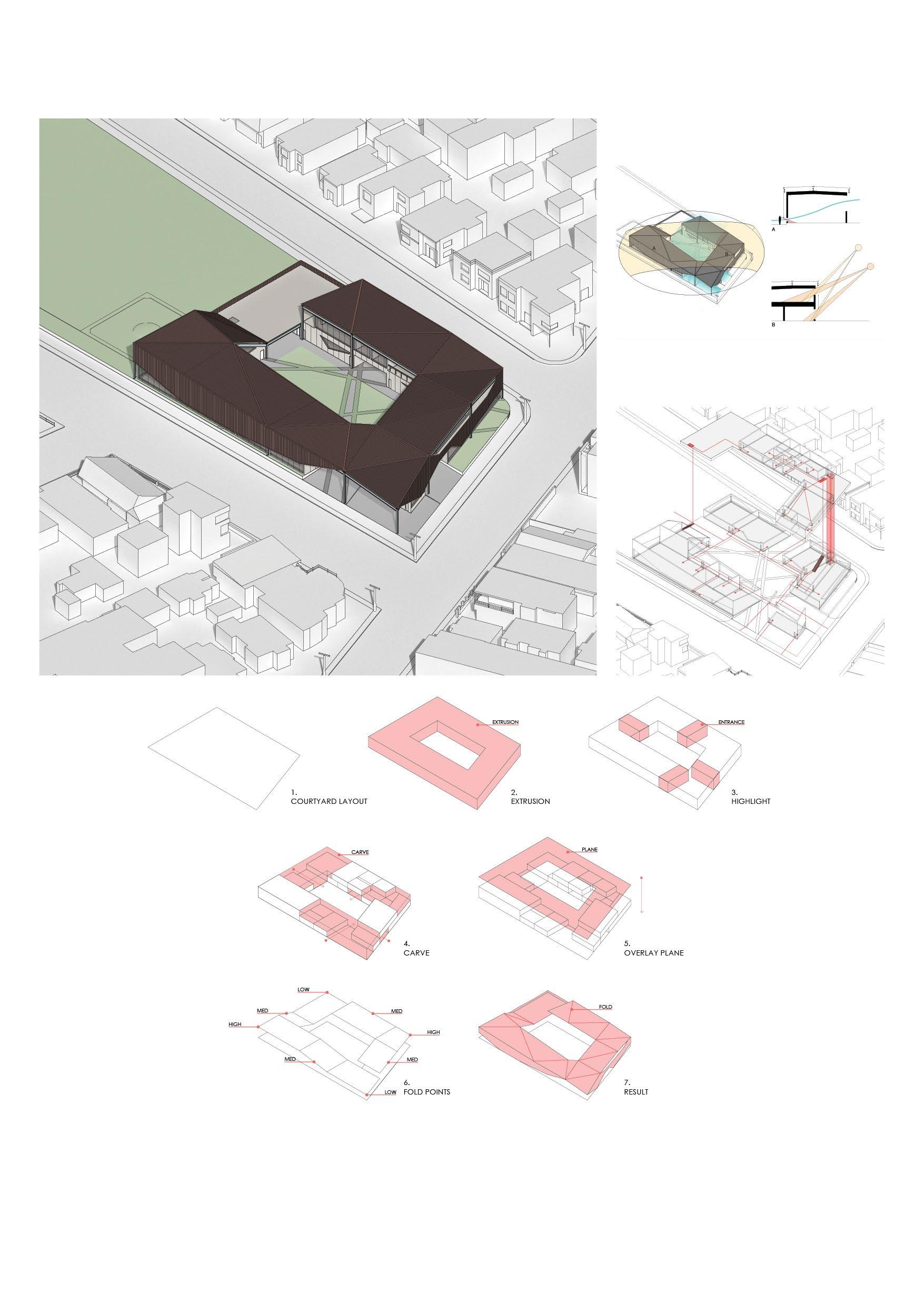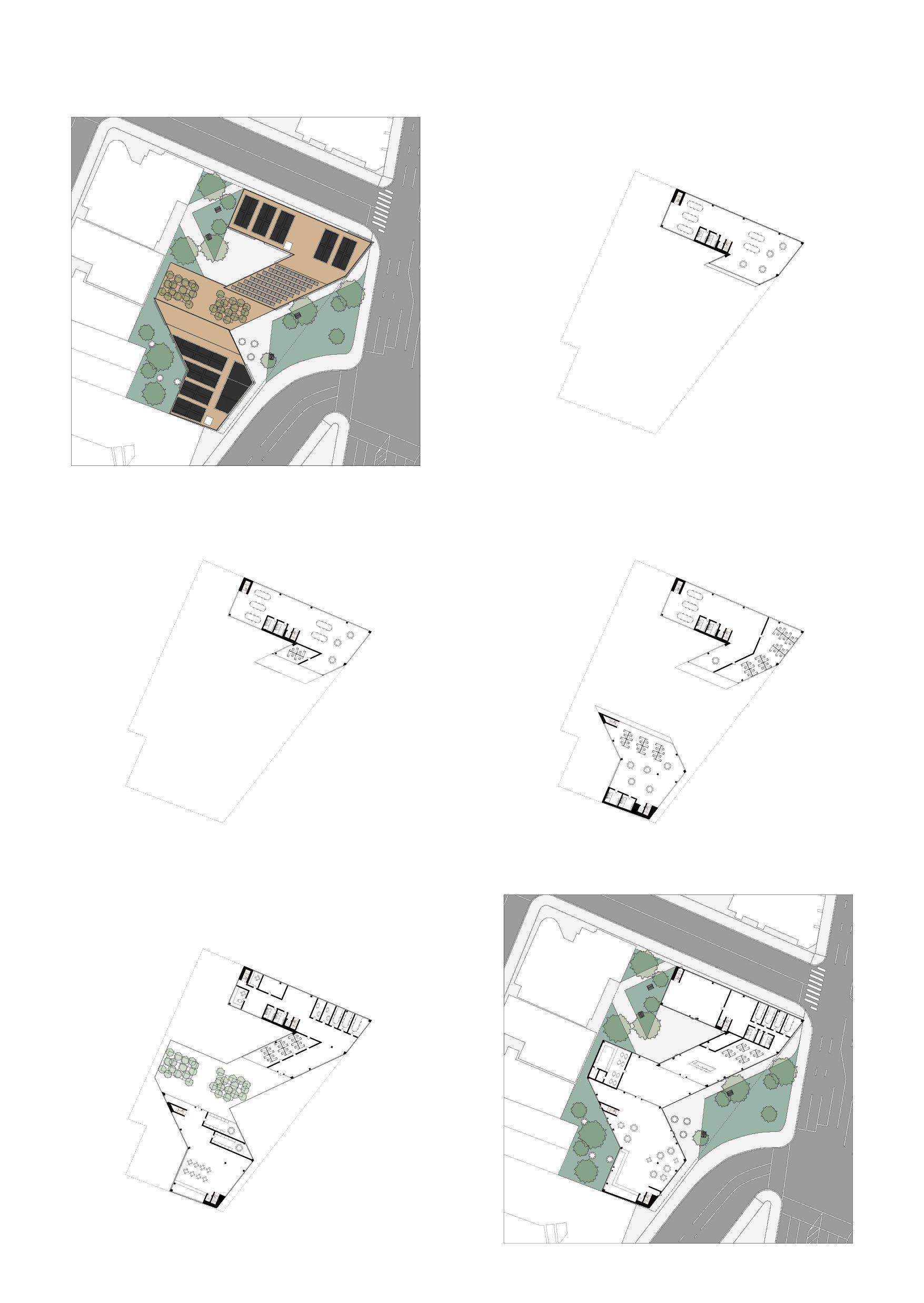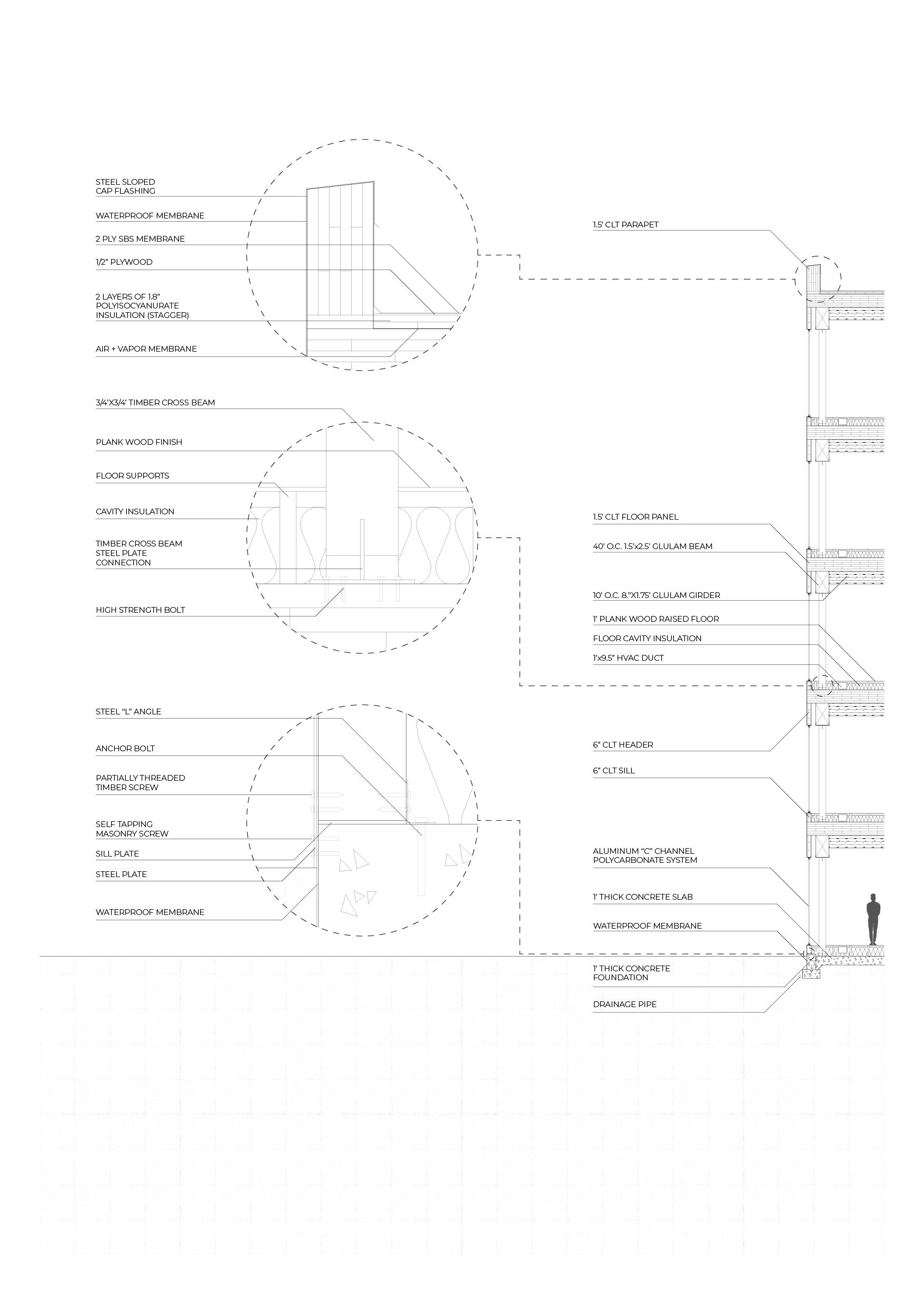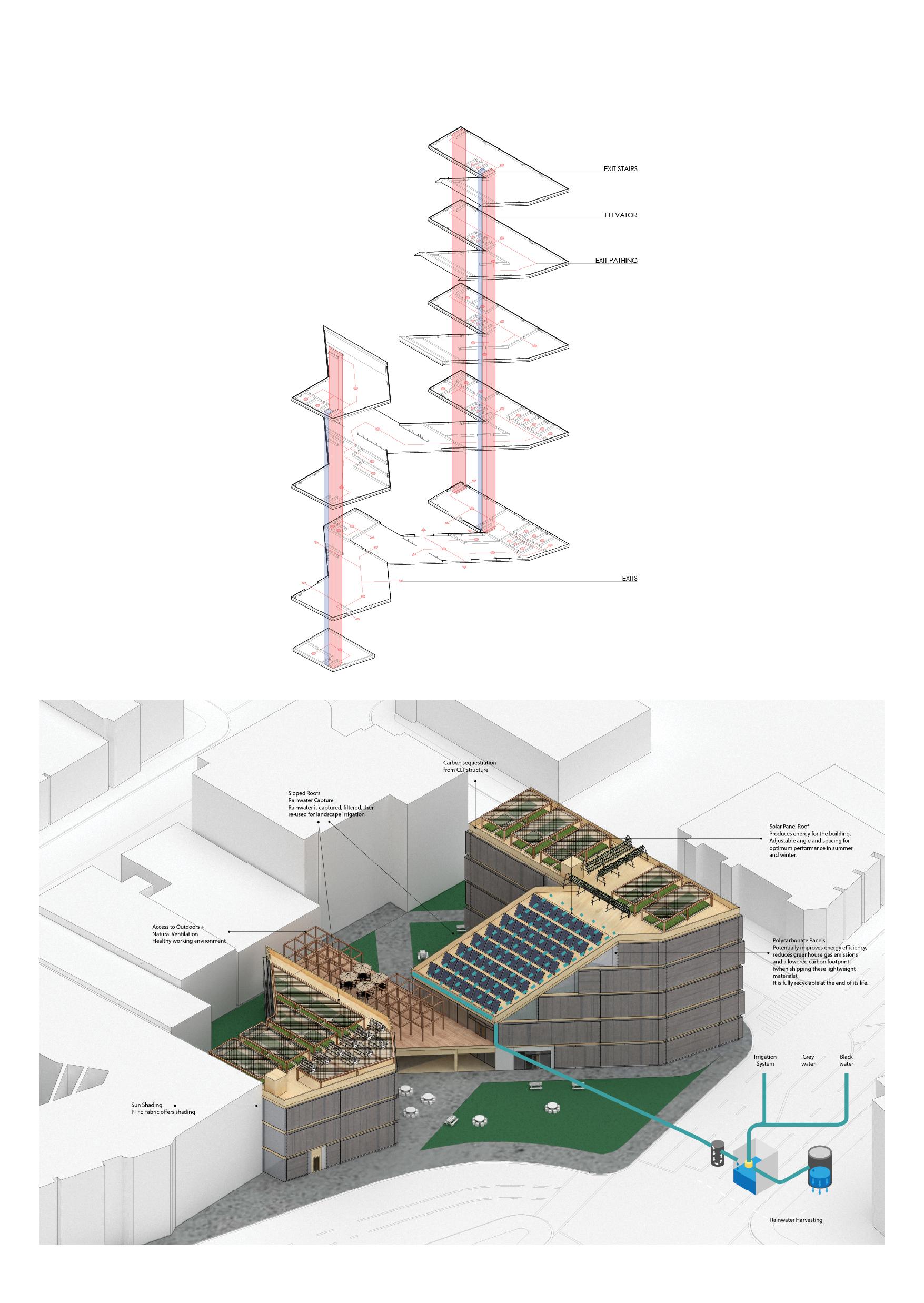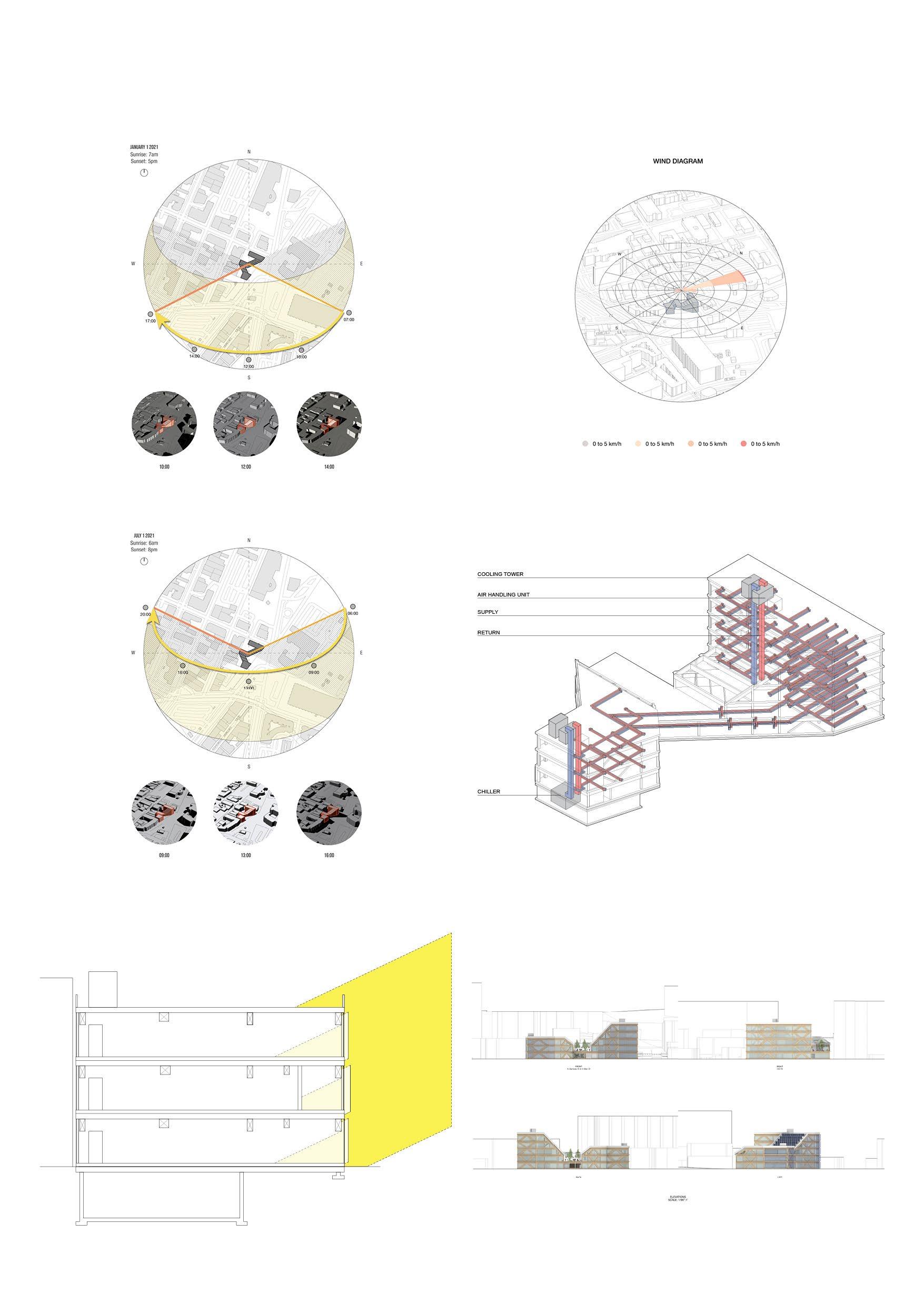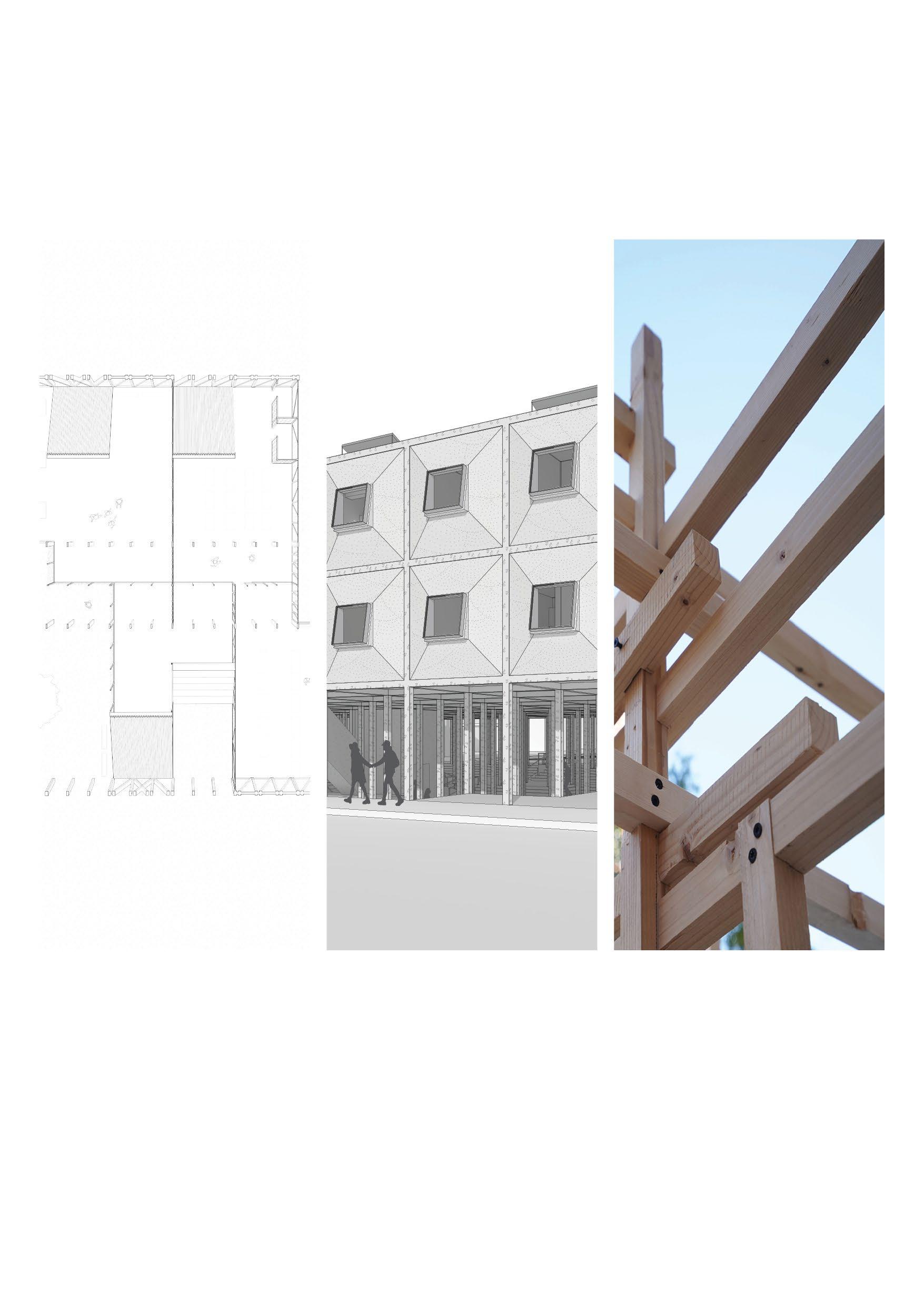
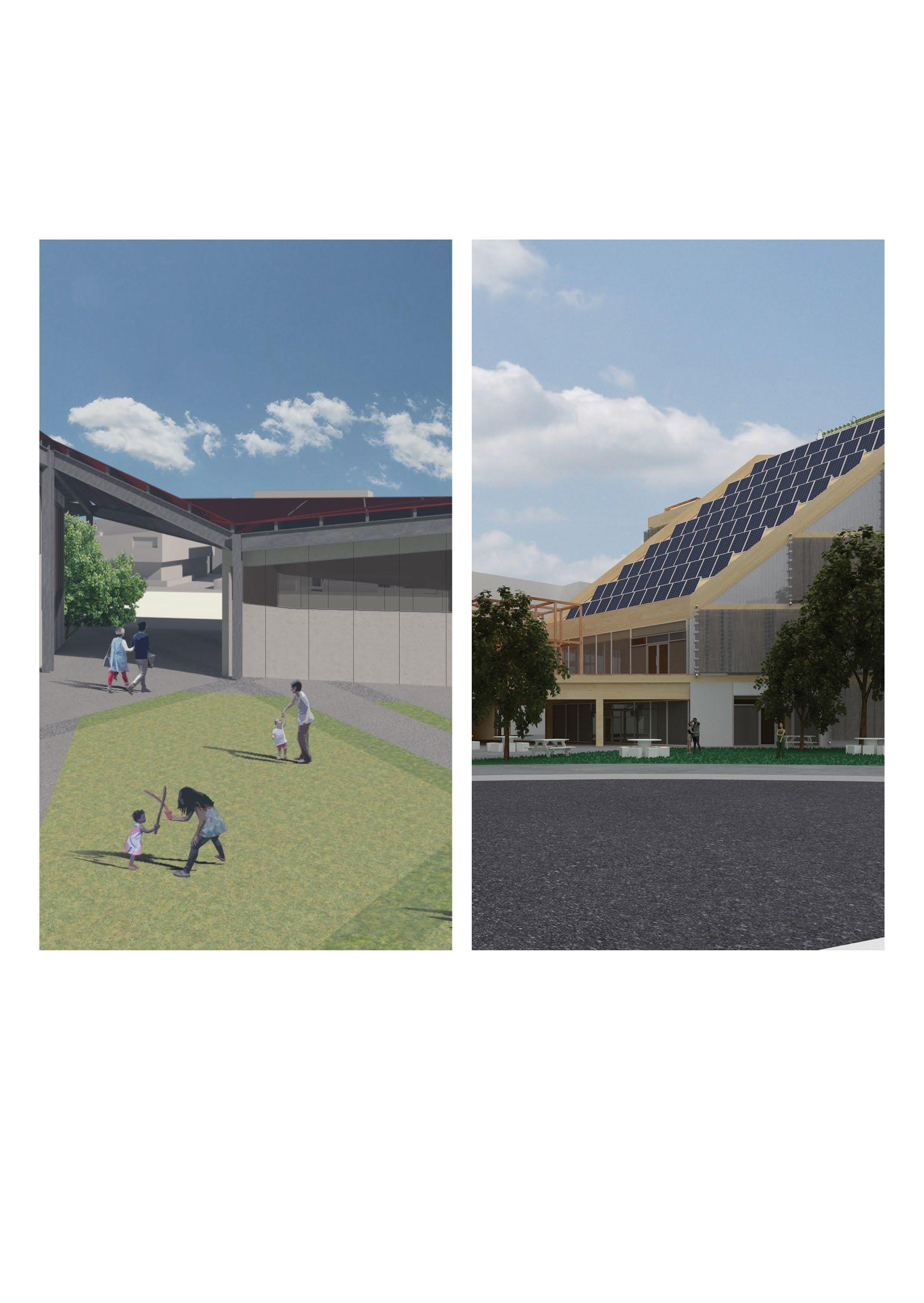
In this project an unused horse stable is converted into a kindergarten that encourages movement and play, breaking down the existing segregated spaces. The rhythmic placement of cells on a grid was broken down to be used as an organizational tool for the bays that housed the programs for the kindergarten. The interlocking walls and openings that exist on each bay prevent programs from being isolated, creating a connected space that flows throughout the building. The roof was altered to create a membrane that moves along the center datum, creating multiple roof to wall conditions to give the building different lively spatial conditions. In spaces with no solid roofing, the exposed trusses begin to read as a different set of roofing rather than a simple exposed structure, reintroducing elements of the original building with a new purpose.

ADAPTIVE REUSE - FROM STABLE TO KINDERGARDEN
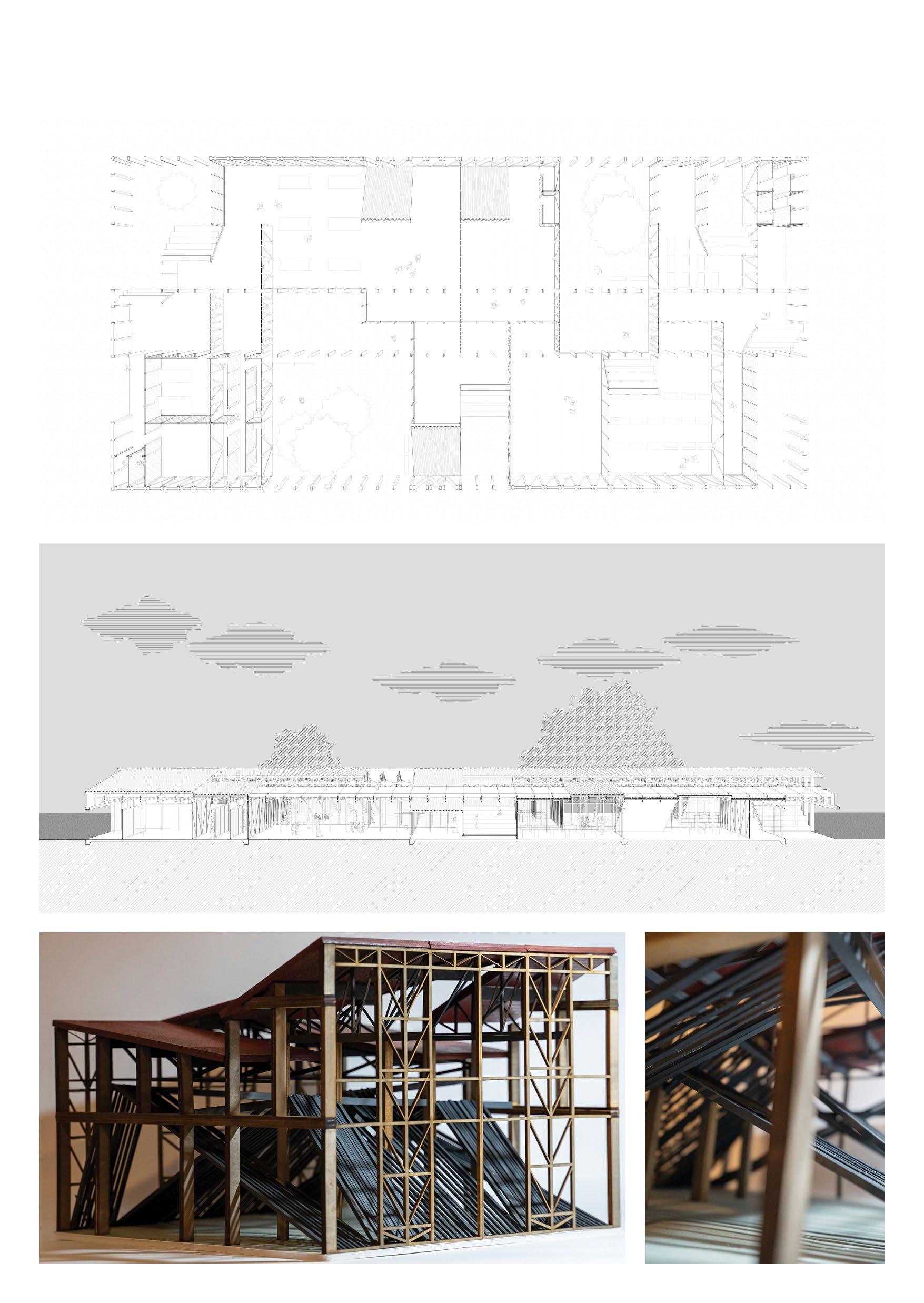
In this project an unused horse stable is converted into a kindergarten that encourages movement and play, breaking down the existing segregated spaces. The rhythmic placement of cells on a grid was broken down to be used as an organizational tool for the bays that housed the programs for the kindergarten. The interlocking walls and openings that exist on each bay prevent programs from being isolated, creating a connected space that flows throughout the building. The roof was altered to create a membrane that moves along the center datum, creating multiple roof to wall conditions to give the building different lively spatial conditions. In spaces with no solid roofing, the exposed trusses begin to read as a different set of roofing rather than a simple exposed structure, reintroducing elements of the original building with a new purpose.
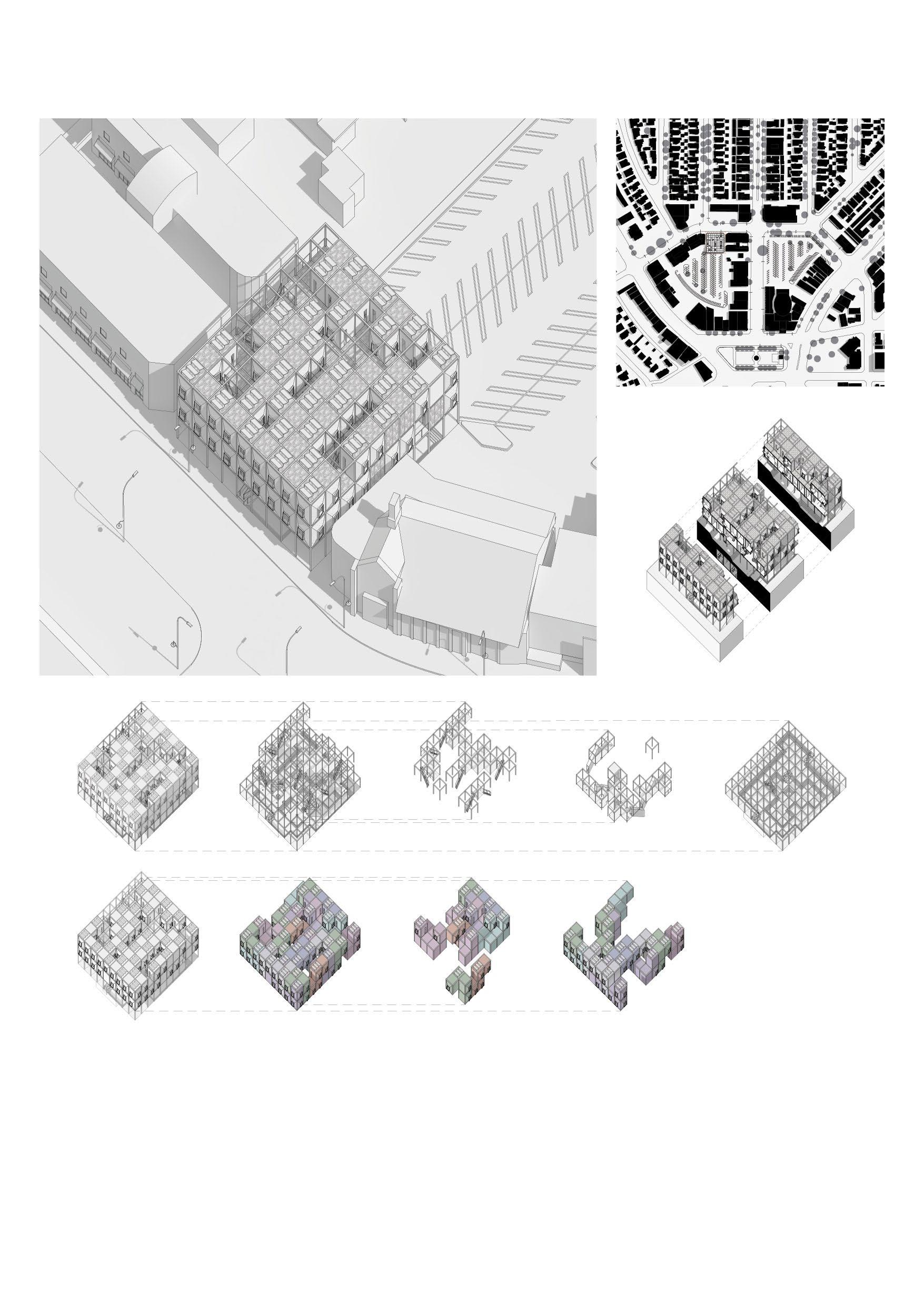
BASEMENT F1
SECTION A

Sunlight is collected and stored in batteries located in the basement. Rainwater is collected through the edges of the cascading ground, treated then stored in water tanks in the basement. The perforations that exist throughout the mass passively cools the complex.

This ephemeral architecture project is a resting spot along the hiking trail of Runyon Canyon in Los Angeles. Especially for beginner hikers, switchbacks are one of the most difficult aspects of a hike. Thus this resting spot would be situated just outside of any of these areas throughout the trail, acting as a resting spot while activating the unused surrounding landscape. This installation would be made purely with 2”x2” lumber, creating a delicate frame structure that forms an inhabitable space underneath the cantilevering frame canopy that begins to dissipate into its surroundings. As it is a frame, it still allows the hikers to experience the sights while hiking, as well as any physical experiences, such as wind, while they are resting from a new perspective within the installation.


This project replaces an existing recreation center to provide a community center for Oakwood that encourages physical activity. This area lacks programs that encourage physical activity that are accessible to all members of the community. Thus, the design incorporates a holistic health center that can have a flexible schedule for programs to appropriately meet the needs for all age groups. Additionally, with private health consultations as a part of the program, residents will be able to lead healthier lifestyles as well. Additionally, as Oakwood also lacks public green spaces, this community center provides various gathering spaces with different spatial conditions, ranging from enclosed to completely open to its natural surroundings.
